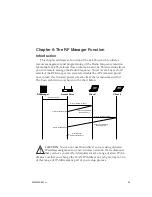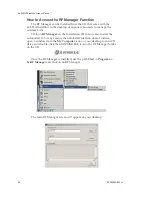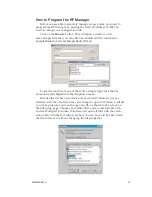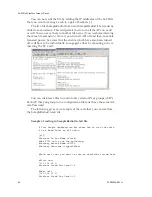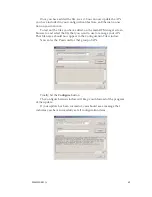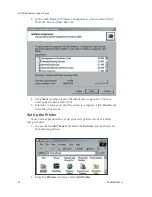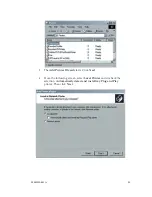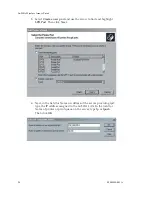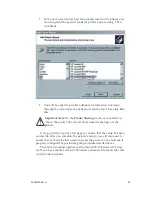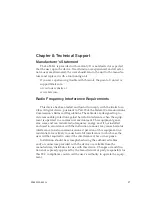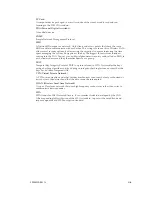
29000132-001 A
G-a
Glossary
3DES
Also referred to as Triple DES, a mode of the DES encryption algorithm that encrypts data
three times.
802.11
802.11 refers to a family of specifications developed by the IEEE for wireless LAN technol-
ogy. 802.11 specifies an over-the-air interface between a wireless client and a base station
or between two wireless clients. The IEEE accepted the specification in 1997.
802.11b (also referred to as 802.11 High Rate or WiFi)
802.11b is an extension to 802.11 that applies to wireless LANs and provides 11 Mbps
transmission (with a fallback to 5.5, 2 and 1 Mbps) in the 2.4 GHz band. 802.11b uses only
DSSS. 802.11b was a 1999 ratification to the original 802.11 standard, allowing wireless
functionality comparable to Ethernet.
802.11g
802.11g applies to wireless LANs and provides 20-54 Mbps in the 2.4 GHz band. Because
802.11g is backwards-compatible with 802.11b, it is a popular component in WLAN con-
struction. 802.11g uses OFDM (orthogonal frequency division multiplexing) technology.
Access Point
An access point is a gateway set up to allow a group of LAN users access to another group
or a main group. The access point doesn’t use the DHCP server function and therefore ac-
cepts IP address assignment from the controlling network.
AES
Short for Advanced Encryption Standard, a symmetric 128-bit block data encryption tech-
nique developed by Belgian cryptographers Joan Daemen and Vincent Rijmen. The U.S
government adopted the algorithm as its encryption technique in October 2000, replacing
the DES encryption it used. AES works at multiple network layers simultaneously.
Bridge
A device that connects two local-area networks (LANs), or two segments of the same LAN
that use the same protocol, such as Ethernet or Token-Ring.
DHCP
Short for Dynamic Host Configuration Protocol, DHCP is a protocol for assigning dy-
namic IP addresses to devices on a network. With dynamic addressing, a device can have
a different IP address every time it connects to the network. In some systems, the device’s
IP address can even change while it is still connected. DHCP also supports a mix of
static and dynamic IP addresses. Dynamic addressing simplifies network administration
because the software keeps track of IP addresses rather than requiring an administrator to
manage the task. This means that a new computer can be added to a network without the
hassle of manually assigning it a unique IP address. Many ISPs use dynamic IP addressing
for dial-up users.
NMS (Network Management Station)
Includes such management software as HP Openview and IBM Netview.
Summary of Contents for 3e-525A
Page 3: ...This page intentionally left blank ...
Page 9: ...vi 29000132 0001 A This page intentionally left blank ...
Page 41: ...3e 525A Outdoor Access Point 32 29000132 001 A ...
Page 53: ...3e 525A Outdoor Access Point 44 29000132 001 A This page intentionality left blank ...
Page 105: ...3e 525A Wireless Access Point 96 29000132 001 A This page intentionally left blank ...

